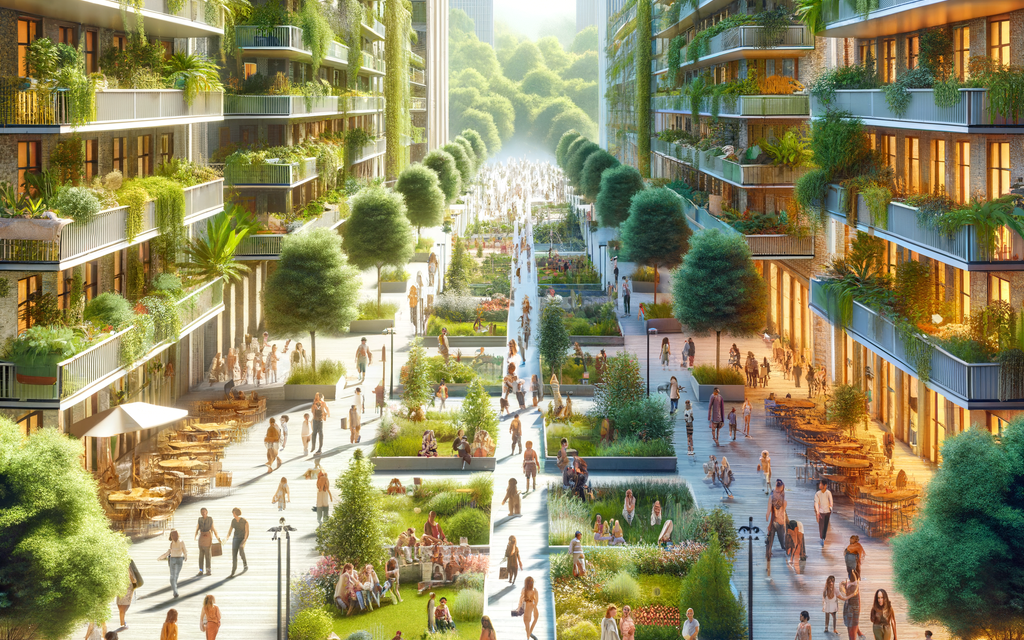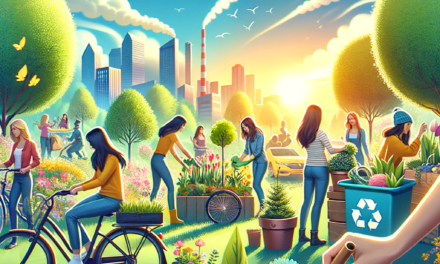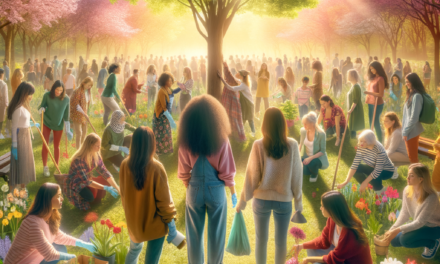As the concrete jungle expands, the need for urban greenery becomes ever more pressing. Urban green spaces are not just patches of grass amidst skyscrapers; they are vital lungs for our cities and sanctuaries for our well-being. With spring around the corner, the time is ripe to explore the myriad benefits of these green oases and how they contribute to environmental activism at a community level.
The Healing Power of Urban Greenery
Amidst the hustle and bustle of city life, urban green spaces stand as serene havens, offering a multitude of health benefits. Research consistently shows that spending time in green environments can help reduce stress, improve mood, and even enhance cognitive function. The presence of trees and plants also contributes to cleaner air, which is a boon for respiratory health.
- Stress Reduction: A study in the ‘Journal of Environmental Psychology’ found that even looking at a green space can lower stress levels.
- Physical Health: Green spaces encourage physical activity, whether it’s a morning jog or a yoga session under the open sky, promoting overall fitness and weight management.
- Mental Clarity: Time spent in nature has been linked to improved attention span and memory retention, as per findings in ‘Frontiers in Psychology’.
Community and Connection
Urban green spaces are not just beneficial for individual health but also for fostering community bonds. Parks and community gardens are gathering spots where people of all ages and backgrounds can come together, promoting social cohesion and inclusivity. They are venues for community events, educational programs, and a shared sense of responsibility towards our environment.
- Social Gatherings: From picnics to farmers’ markets, green spaces provide a platform for community activities.
- Educational Opportunities: Many urban gardens offer workshops on sustainable living and gardening, empowering residents with knowledge and skills.
- Volunteerism: Participating in park clean-ups or tree-planting drives is a great way to give back to the community while protecting the environment.
Urban Biodiversity and Ecosystem Services
Green spaces serve as crucial habitats for urban wildlife, supporting biodiversity and offering essential ecosystem services. Trees and plants in these areas help to regulate temperatures, mitigate the urban heat island effect, and manage stormwater runoff, reducing the risk of flooding.
- Wildlife Habitats: Parks can be home to a surprising variety of birds, insects, and small mammals, contributing to urban biodiversity.
- Climate Regulation: The cooling effect of green spaces is vital in combatting the increasing temperatures in urban areas.
- Water Management: Vegetation plays a key role in absorbing rainwater, which helps prevent erosion and water pollution.
Empowering Urban Environmental Activism
Urban green spaces are hotbeds for environmental activism. They offer tangible examples of the benefits of eco-friendly practices and inspire residents to take action. By supporting local parks, you’re not just enjoying a slice of nature; you’re advocating for sustainable urban planning and the importance of environmental stewardship.
- Advocacy: Join or start campaigns for the creation and maintenance of green spaces in your city.
- Education: Use these spaces to educate others about the importance of nature in urban settings.
- Active Participation: Engage in community gardening or tree-planting initiatives to greenify urban areas.
Conclusion: Your Role in Urban Greening
Urban green spaces are more than just pleasant aesthetics; they are essential components of healthy, sustainable cities. As we welcome the fresh beginnings of spring, let’s embrace the role we can all play in fostering these green havens. Whether it’s through volunteering, advocating for more greenery, or simply enjoying the parks responsibly, every action counts towards building a greener, more vibrant urban landscape.
For those looking to take a more hands-on approach to urban gardening, the Busy People’s Urban Gardening Log and Planner at £5.07 can be an invaluable tool. This planner helps you track your gardening activities, plan your green space, and stay organized in your urban gardening endeavors.
Key Takeaways:
- Urban green spaces improve physical and mental health.
- They foster community bonds and inclusivity.
- They support urban wildlife and provide essential ecosystem services.
- They inspire and facilitate environmental activism in urban settings.
As the seasons change, let’s commit to the growth and preservation of our urban green spaces, ensuring they continue to thrive for generations to come.










